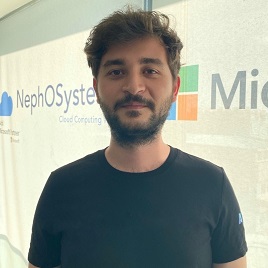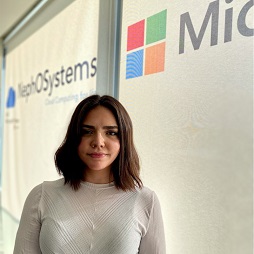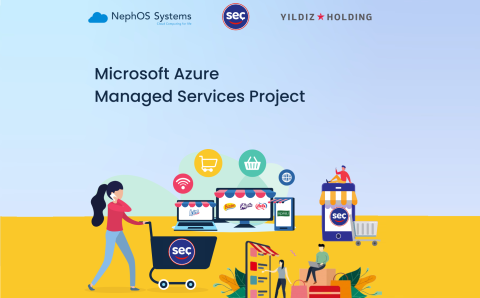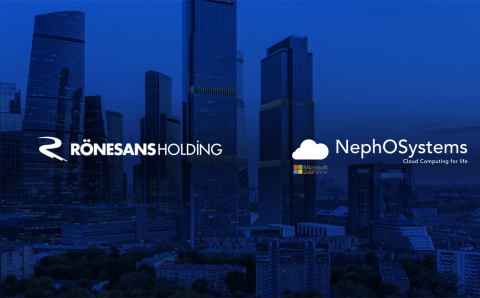DevOps
Azure DevOps & GitHub
Services We Deliver
Preparing for your success,
we provide truly prominent Azure DevOps & GitHub Solutions.
ADVANCED DEVOPS
What We OFFER
If there’s one lesson to be learned from the last decade of “Agile transformations”, it’s that there is no one-size-fits-all solution to adopting or implementing an Agile approach. Every organization has different needs, constraints, and requirements
Schedule and rhythm
A culture of shipping
Scaling strategies
Improve performance
Team and organizational structures
Lean business processes
Business agility
We will support the migration from pre-requisites and test migrations through to a final production cut over
Global availability
Immediate access to latest features
Simplified Azure deployment
With DevOps CI/CD, our customers will be able to follow a lot of things in their organizations such as planning, deployment, release, testing, code changes, versioning and will achieve automation with the build pipelines they create.
Implement advanced development practices
Optimize the planning
Development
Operations
Implement application pipelines
Automated builds
We are integrating and extending your GitHub development process and infrastructure to leverage Azure and Azure DevOps
Integrating
Extending
Development process
Migrating
Building pipelines
Linking to Azure
Support
DEVOPS ADOPTION & EXECUTION
Accelerate Your Software Development
Continuous Integration (CI)
Continuous Integration (CI) is the process of automating the build and testing of code every time a team member commits changes to version control. CI encourages developers to share their code and unit tests by merging their changes into a shared version control repository after every small task completion. Committing code triggers an automated build system to grab the latest code from the shared repository and to build, test, and validate the full main, or trunk, branch
Continuous Delivery (CD)
Continuous Delivery (CD) is the process to build, test, configure, and deploy from a build to a production environment. Multiple testing or staging environments create a Release Pipeline to automate the creation of infrastructure and deployment of a new build. Successive environments support progressively longer-running activities of integration, load, and user acceptance testing. Continuous Integration starts the CD process and the pipeline stages each successive environment to the next upon successful completion of tests
Under this approach, developers are responsible for building software in a way that allows for continuous integration and automated testing. It means developers must build software to be easily integrated with the rest of the system & automatic testing.
Continuous Deployment
With continuous deployment, you automate the entire process from code commit to production. The trigger between the develop and deliver phases is automatic, so code changes are pushed live once they receive validation and pass all tests. This means customers receive improvements as soon as they’re available.
Microservices
Microservices are an architectural approach to building applications where each core function, or service, is built and deployed independently. Microservice architecture is distributed and loosely coupled, so one component’s failure won’t break the whole app. Independent components work together and communicate with well-defined API contracts. Build microservice applications to meet rapidly changing business needs and bring new functionalities to market faster.
Infrastructure as Code
Infrastructure as Code (IaC) is the management of infrastructure (networks, virtual machines, load balancers, and connection topology) in a descriptive model, using the same versioning as DevOps team uses for source code. Like the principle that the same source code generates the same binary, an IaC model generates the same environment every time it is applied. IaC is a key DevOps practice and is used in conjunction with continuous delivery.
Monitoring and Logging
Security logging and monitoring focuses on activities related to enabling, acquiring, and storing audit logs for Azure services.
Communication and Collaboration
We’ve said that DevOps and software development lifecycle is all about communication and collaboration. The goal is to keep everyone on the same page so that the final product is the best it can be. It means all the sections need to be on the same wavelength.
No tool comes with zero drawbacks. However, each one has some limitations along with multiple performances. That’s why companies need to select only those that can meet the demand for upcoming tasks. For example, Nagios is a popular tool for monitoring system health, while Splunk is a popular tool for logging and searching through large volumes of data.
Our experienced expert
Access the world’s most trusted DevOps service. With formal training in Azure technology and technical fields, our staff know more than they show. Our service offerings to improve the DevOps experience throughout the product lifecycle include: Creating a flexible development process, changing the application steps as CI and CD, automating software developments, ensuring continuous distribution

Fatih Yucel
Cloud Solution Architect / DevOps Engineer | MCT

Rumeysa Ersoy
Azure Specialist

Ismail Kahveci
Cloud Solution Architect / CTO | MCT
We run all kinds of IT services that vow your success
Case studies
Proud projects make us excel
Challenges are just opportunities in disguise. Take the challenge!
Testimonials
What people praise about NephOS Systems ?
1790
Happy clients
491
Finished projects
245
Skilled Experts
1090












